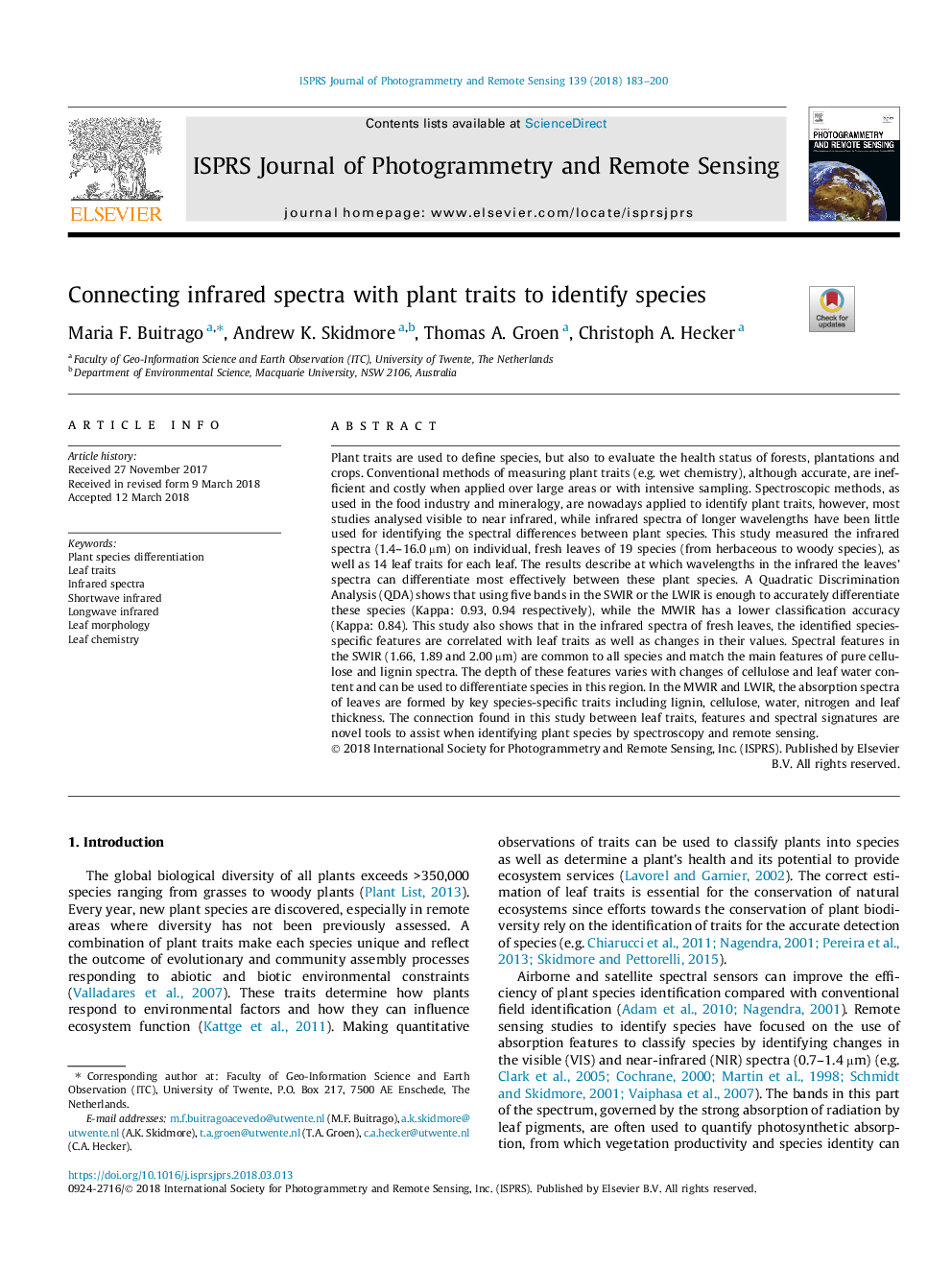| Article ID | Journal | Published Year | Pages | File Type |
|---|---|---|---|---|
| 6949180 | ISPRS Journal of Photogrammetry and Remote Sensing | 2018 | 18 Pages |
Abstract
Plant traits are used to define species, but also to evaluate the health status of forests, plantations and crops. Conventional methods of measuring plant traits (e.g. wet chemistry), although accurate, are inefficient and costly when applied over large areas or with intensive sampling. Spectroscopic methods, as used in the food industry and mineralogy, are nowadays applied to identify plant traits, however, most studies analysed visible to near infrared, while infrared spectra of longer wavelengths have been little used for identifying the spectral differences between plant species. This study measured the infrared spectra (1.4-16.0â¯Âµm) on individual, fresh leaves of 19 species (from herbaceous to woody species), as well as 14 leaf traits for each leaf. The results describe at which wavelengths in the infrared the leaves' spectra can differentiate most effectively between these plant species. A Quadratic Discrimination Analysis (QDA) shows that using five bands in the SWIR or the LWIR is enough to accurately differentiate these species (Kappa: 0.93, 0.94 respectively), while the MWIR has a lower classification accuracy (Kappa: 0.84). This study also shows that in the infrared spectra of fresh leaves, the identified species-specific features are correlated with leaf traits as well as changes in their values. Spectral features in the SWIR (1.66, 1.89 and 2.00â¯Âµm) are common to all species and match the main features of pure cellulose and lignin spectra. The depth of these features varies with changes of cellulose and leaf water content and can be used to differentiate species in this region. In the MWIR and LWIR, the absorption spectra of leaves are formed by key species-specific traits including lignin, cellulose, water, nitrogen and leaf thickness. The connection found in this study between leaf traits, features and spectral signatures are novel tools to assist when identifying plant species by spectroscopy and remote sensing.
Keywords
Related Topics
Physical Sciences and Engineering
Computer Science
Information Systems
Authors
Maria F. Buitrago, Andrew K. Skidmore, Thomas A. Groen, Christoph A. Hecker,
